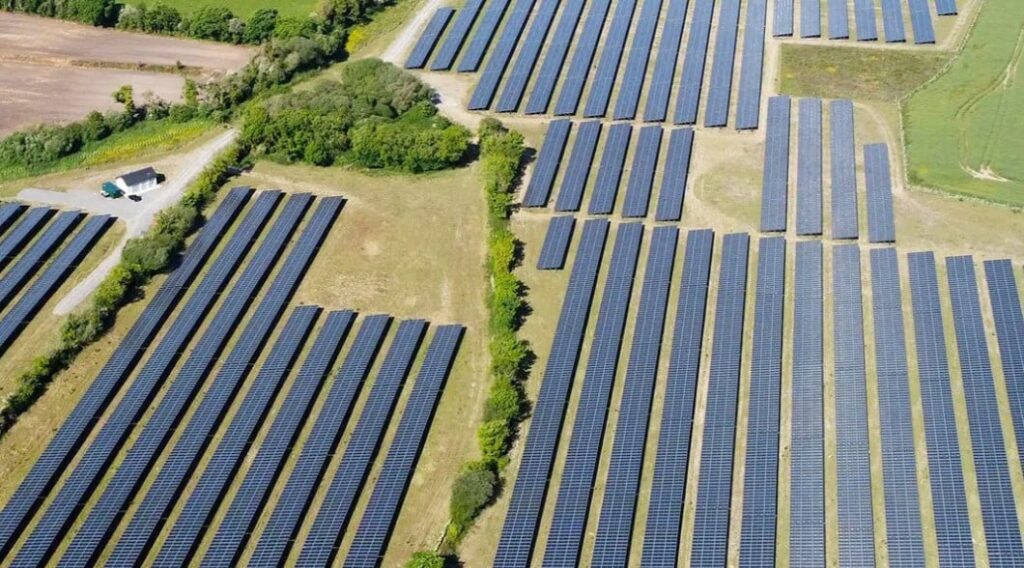
Ofgem, the energy regulator, has officially approved plans to spike ‘zombie’ projects from the grid connection queue and streamline the connection of renewable energy projects that are most needed, which could result in a sizeable increase in utility-scale solar PV proposals.
The long-anticipated grid connection reforms were first put forward by the National Energy System Operator (NESO) with the aim of reducing the number of projects awaiting connection to the UK electricity grid.
According to the Department for Energy Security and Net Zero (DESNZ), companies are currently waiting up to 15 years to be connected, with the length of the queue growing tenfold in the last five years.
Ofgem said that as of February 2025, 756GW worth of projects were in the queue, with 587GW at transmission and 178GW on the distribution network. These figures far exceed what is needed for either Clean Power 2030 (CP30) or net zero by 2050.
As such, the regulator has made good on its minded-to decision to approve the reforms. The details of how the new process will work are mostly unchanged from earlier this year.
Grid connections reform a major boon to solar PV and BESS
The move is anticipated to be a major boon to the UK’s solar PV sector. According to a spokesperson from the energy regulator, Ofgem expects a sizeable increase in Gate 2 offers, from 39GW to 65GW. Trade association Solar Energy UK also believes the reformation of the grid connection queue is likely to spearhead utility-scale solar PV developments.
“Reforming the connections queue is critical to reaching Clean Power by 2030 and paving the way for the 60GW industry to deliver. While we welcome Ofgem’s announcement in principle, the government must ensure network operators do not impose arbitrary caps that disadvantage solar and battery storage,” Chris Hewitt, CEO of Solar Energy UK, said.
“Restricting viable projects would undermine the pipeline needed to achieve the government’s energy mission and contradicts its call to ‘choose Britain’ for investment.”
However, it is not just solar PV that stands to benefit from the grid connection reforms. Indeed, the reforms will see a notable rise in battery energy storage system (BESS) capacity, a key technology in complementing and shoring up variable renewable energy generation and maintaining grid reliability.
Research from UK independent power producer (IPP) Root-Power has found that 7.6GW of projects, across 174 projects, will likely be made offers to connect before 2030. The CP30 plan’s target is to have 11GW of BESS operational by 2030.
Commenting on this, Neil Brooks, managing director of Root-Power, said: “The CP2030 reforms will create great opportunities for the storage sector. However, once revised connection offers are issued, now likely to be early 2026, they will come with stringent commitment milestones, meaning developers who have limited means to deliver against these milestones must now look to divest of these developments.”
Brooks also noted that the market is heading towards consolidation, in which developers will need to rapidly sell their project developments to IPPS that can finance and build them.
The changes will also grant prospective investors further certainty about allocating funding for the country’s energy transition. This could benefit the country by helping scale up the uptake of other clean technologies, such as electric vehicles (EVs), heat pumps, and data centres.
Touching on this, Mikey Clark, CEO of Relode Energy, a developer of gigawatt-scale Power Parks, said that energy is the “backbone of the economy.”
“Energy is the backbone of our economy, and with whole industries being asked to electrify and decarbonise, it’s vital that genuine, fit-for-purpose demand connections are prioritised in the queue,” Clark said.
“Timely connections will give businesses the certainty and confidence they need to invest, grow and compete on a global stage, helping to power economic growth and achieve net zero.”
What has changed in the grid connection process?
The only adjustments Ofgem has made are a slightly smaller Gate 1 queue, and the most significant changes are driven by the newly combined transmission and distribution level solar capacities in CP30.
There will be no connection pause after readiness checks are made, and projects with planning consent (already protected under the reforms) that are due to connect on or before 31 December 2027 will receive assurance about connection dates and connection points.
Ofgem said the connections reform will deliver wider benefits, including lowering consumer bills through cheaper generation and reduced system costs, both through avoided network build and an anticipated reduction in constraint costs.
It said that the network build required to accommodate the whole queue would be unfeasible and would involve significant wasted costs. NESO, DESNZ and Ofgem have each independently stated these benefits.
DESNZ said that taking a strategic, planned approach will remove the need for billions of pounds spent on unnecessary grid reinforcement. Energy secretary Ed Miliband added that the changes “will axe ‘zombie’ projects and fast-track connections for homegrown power”.
Parts of this article first appeared on our sister site Current±. Additional reporting by George Heynes.

